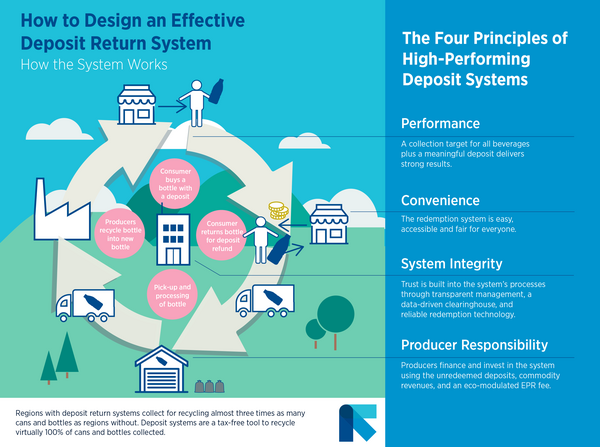With growing awareness of plastic waste and more countries adopting deposit policies, “Rewarding Recycling: Learnings from the World’s Highest-Performing Deposit Return Systems” (free download) reflects on what makes a high-performing system – so stakeholders can better understand why some deposit systems are succeeding, while others fail.
Rising interest in circular economy and combatting plastic waste
There are increasing calls from the public to address plastic pollution and recycling costs, and from experts to move away from traditional linear take-make-dispose models in favor of a circular economy. Policymakers are turning to DRS as a successful approach for tackling these challenges. Also known as container deposit schemes or bottle bills, this legislation adds a small deposit to the price of a beverage, which is repaid to consumers when they return the empty bottles and cans for recycling.
In the past three years alone at least 22 states or countries have committed to update or develop deposit return systems, soon bringing the global total to more than 60. This includes England, Portugal and all of Australia. In addition, the European Union’s Single-Use Plastics Directive establishes targets for member states to collect 90% of all plastic bottles by 2029, a rate experts say is difficult to reach without a deposit on beverage containers. In Europe, existing deposit systems see up to 98% of plastic drink containers collected for recycling (with a 95% average for all European DRSs), compared to other recycling collection models, which average a 47% collection rate across Europe.(1) (2)









